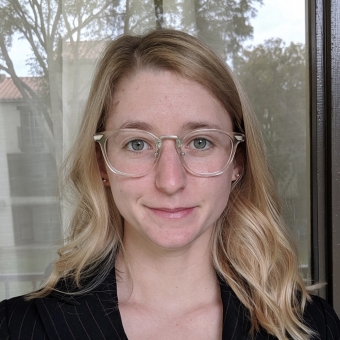
Date:
Location:
Title:
abstract
Polyelectrolytes (PEs) play many roles: they are used in industrial processing of oil and concrete, incorporated in shampoos and other personal care products, and are crucial components of natural and synthetic biomaterials. Properties of PE solutions (viscosity, turbidity) depend strongly on the conformation of the individual charged chains. Additionally, the conformations of biological polyelectrolytes like proteins and nucleic acids affect how they behave and interact with other biomolecules. Relative to neutral polymers, PEs in solution take on expanded conformations due to electrostatic repulsion, the magnitude of which depends on the concentration of added salt. For decades, researchers have based understanding of PE conformation on Debye's picture of salt-induced electrostatic screening.
We challenge the Debye picture using modern methods of high-precision single-molecule manipulation to directly measure the end-to-end extension of PEs. We demonstrate, for PEs in solution with small amounts of multivalent salt, the existence of an unexpected regime where added monovalent salt does not affect the PE conformation. Experiments and simulations show that this effect is electrostatic in nature and occurs for multiple PE systems and ion species.
This surprising regime arises due to the arrangement of ions around the PE. While most salt ions are free to diffuse around in solution, strong electrostatic attraction causes some multivalent cations to condense onto the anionic PE. With simulations and theory, we show that when more monovalent salt is added, this “jacket” of condensed multivalent cations responds to counteract changes in the bulk ionic strength. With a Donnan equilibrium model, we predict an ion exchange process between condensed and free salt, and demonstrate how it leads to an ionic strength independent chain stiffness.
bio
Sarah is a Ph.D. student in the Materials department at UC Santa Barbara. Her research, in Professor Omar Saleh’s group, uses magnetic tweezers force spectroscopy to study mechanical properties of biopolymers at the single-chain level. She is particularly interested in hyaluronic acid, a polysaccharide found throughout the extracellular matrix. Her experiments aim to characterize how the elastic properties of hyaluronic acid are altered by salts and biomolecular ligands, with the aim of understanding its biological roles and building design principles for biomaterials.
Outside of research, Sarah volunteers for UCSB ScienceLine, answering science questions from K-12 students. She also enjoys running and baking. Before moving to California, Sarah received a B.S. in Chemical Physics from Tufts University in 2015.
Hosted by Angela Pitenis. Download event flyer.



